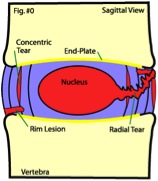
As a Chiropractor in Manly, I see first hand on a day-to-day basis the true effects of acute and chronic back pain in our society.
Disability from low back pain is a growing public health problem in Australia with a lifetime prevalence rate of between 60%-80%. In fact low back pain is the second most common presenting complaint to general practitioners after upper respiratory complaints (i.e cold and flu symptoms).
On a larger scale, disability from back pain places a significant socioeconomic burden on the individual and the community. In Australia, back problems are the leading specific musculoskeletal cause of health system expenditure, with an estimated total cost of $700 million in 1993-1994.
A common misconception is that a single event is the cause of most back pain episodes. According to Professor Stuart McGill a leading low back researcher the most likely scenarios which result in injury occur as the result of cumulative trauma from sub-failure magnitude loads. In other words injury most commonly is the result of repeated loads placed on the spine and discs which leads to accumulated trauma such as micro tears of the outer portion of the disc and a weakening of supporting structures. This process is known as Internal Disc Disruption (IDD) and is thought to account for nearly 40% of all back pain. Examples of these types of activities can be seen in the below images.

Internal Disc Disruption (IDD)


More Interestingly a 2004 study by the Northwestern University School of Medicine actually found that Patients with Chronic low back pain (CPB) showed a loss of 5-11% brain volume in areas responsible for functions such as memory, thought and sensory processing than in healthy subjects. This decrease is equivalent to the brain volume lost in 10-20 years of normal aging. Experts believe this to occur as a result of diminished movement and activity particularly that of our midline postural muscles which provide a large amount of stimulation necessary for the growth and maintenance of our nervous system and brain.
So what can you do to keep you out of trouble?
- Avoid positions that compromise your spine during daily activity (prolonged incorrect bending or repetitive actions)
- Regular stretching of your legs and gluteal muscles to maintain hip mobility and decrease stresses being transferred to your lower back
- Break up sitting periods every 20-30 minutes with a standing stretch
- Strengthen your core and spinal stabilizing muscles endurance using functional whole body dynamic exercises.
Regular chiropractic adjustments aimed to ensure proper spinal and nervous system functioning to minimize the chances of breaking down. This helps your body to deal with day-to-day stresses in a much more effective manner and allow you to keep doing the things you enjoy doing!